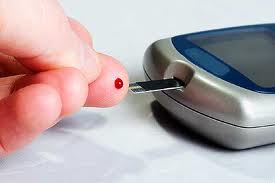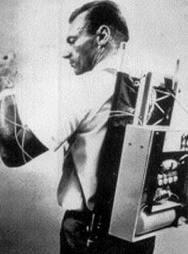I’ve written many times, (too many times as far as I’m concerned) about my experience as the parent of a daughter who has Type 1 diabetes. It always seems to come up around this time of year because it’s time for the JDRF annual Walk for the Cure. Actually, like so many things in the world, it isn’t just about JDRF or Diabetes because Telus has branded it. It is officially to be known, henceforth and hereinafter as the Telus Walk to Cure Diabetes (insert year here).
 Now, that is supposed to be a good thing, and it is. Really. It means they provide funds for promotion of these events and a lot of other work JDRF does in the competitive world of fundraising. At the walk Telus will be there along with other sponsors who have also ponied up for the chance to have their names splashed broadly and brightly in front of several hundred grateful families. As part of their promotional on-site presence some will provide free food — no small contribution considering the number of young kids at these events–other will offer free glucometers and test strips.
Now, that is supposed to be a good thing, and it is. Really. It means they provide funds for promotion of these events and a lot of other work JDRF does in the competitive world of fundraising. At the walk Telus will be there along with other sponsors who have also ponied up for the chance to have their names splashed broadly and brightly in front of several hundred grateful families. As part of their promotional on-site presence some will provide free food — no small contribution considering the number of young kids at these events–other will offer free glucometers and test strips.
Now to those of you not part of this club of reluctant members that is Type 1 Diabetes, this might not mean much but, trust me, the Accura and OneTouch booths get mobbed by parents looking for carrying cases and more importantly, free test strips. See, the blood sugar testing device, is really just a come on. It is vital, of course, but the various companies competing for your chronic illness dollar give away glucometers with free puppies. The money maker for them is the disposable part, the test strip.
competing for your chronic illness dollar give away glucometers with free puppies. The money maker for them is the disposable part, the test strip.
Even the lancets–if you’ve ever been to the blood donor clinic you’ve met the lancet, almost always the most painful part of the entire process–can be used a few times before they get so dull that all they do is dent the callused fingers of a diabetic. But test strips are a one use thing…soak up a drop of blood, spin the blood sugar wheel and thank you very much. You can tell if you are in the home of a diabetic as there are almost always a few used test strips poking out from under the carpet or baseboards or adhering to the cat’s tail…like confetti, they get everywhere…and cost a small fortune.
lancet, almost always the most painful part of the entire process–can be used a few times before they get so dull that all they do is dent the callused fingers of a diabetic. But test strips are a one use thing…soak up a drop of blood, spin the blood sugar wheel and thank you very much. You can tell if you are in the home of a diabetic as there are almost always a few used test strips poking out from under the carpet or baseboards or adhering to the cat’s tail…like confetti, they get everywhere…and cost a small fortune.
The main players in the insulin game, Eli Lilly and Novo Nodisk, usually have booths with competing injection pens. Once again, note, the hardware is the give away, they want you to buy their insulin. Day after day, week after week. And, of course as a diabetic, you kinda, sorta need it, to live.

No, not a jet pack...this is the first insulin pump
The new kids, the insulin pump manufacturers will also have their booths there too but they don’t give away their hardware. Nope, those wee happy packs go for $6,000.00 each and that is just the buy in. After that you have to pay for the cartridges that hold the insulin – average two of them a week, plus the tubing and the insertion sets. They’ll just have general all purpose swag with their name on it.
If you buy one brand, they also have a sensor that is inserted in a separate spot from the pump. It monitors the glucose levels in the interstitial tissue (i.e. fat layer under the skin). It isn’t quite as accurate as the finger poke but it gives a much better picture in terms of long term fluctuations in blood glucose levels. You need these to calculate the basal rates on the pump. The bottom line here is that each sensor lasts maybe a week and costs aproximately $45.00 a piece.
a separate spot from the pump. It monitors the glucose levels in the interstitial tissue (i.e. fat layer under the skin). It isn’t quite as accurate as the finger poke but it gives a much better picture in terms of long term fluctuations in blood glucose levels. You need these to calculate the basal rates on the pump. The bottom line here is that each sensor lasts maybe a week and costs aproximately $45.00 a piece.
By now you should have grasped a couple of things. First of all, unless you are a diabetic yourself or live with a person who has diabetes or have substantial medical training in endocrinology, life with Type 1 diabetes means learning a new language. I imagine I lost a few of y’all back shortly after “glucometer”. It’s all part of the learning curve that happens shortly after you stop saying, ‘no, it must be something else’ and start listening to what the nurse is telling you.
The other thing you may have grasped is without a medical plan, this is a damn expensive way to live. In a country with medicare it is still expensive and we have a private insurance plan that covers whatever Pharmacare won’t cough up.
What amazes me is that the companies are lining up here to give away glucometers and injectors and bags and swag where there is medicare and extended medical benefits and pharmacare. In the countries where these safety nets do not exist and millions of people live on below subsistance wages the same companies don’t seem to be quite so eager to hand out party favours. How the hell do those families afford it?
I guess, basically, they don’t. In India there is an organization called Dream Trust started by a doctor who noticed young girls he had diagnosed were dying at a tremendous rate because of deliberate selective neglect.
 It’s at times like this I feel blessed, actually. I’d rather not be so lucky but, on the other hand, it would kill me if I wasn’t.
It’s at times like this I feel blessed, actually. I’d rather not be so lucky but, on the other hand, it would kill me if I wasn’t.


2 Responses to Them that got shall get